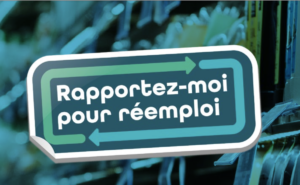Vous pouvez prendre la pilule bleue et continuer de pratiquer vos activités comme si de rien n’était. Le « business as usual » qui est le comportement le plus classique, rassurant, propre à nombre d’institutions, publiques ou privées, comme aux individus, conservateurs par nature. Même s’il est probable, puisque vous nous lisez, que vous l’êtes moins que d’autres
Ou prendre la pilule rouge, suivre le lapin blanc et entamer votre voyage dans la matrice ! Celle du monde de demain, de la transition environnementale et économique, qui ne résulte pas d’un choix mais d’une nécessité. Et comme disait Georges Clemenceau, « Quand les événements nous dépassent, feignons d’en être les organisateurs. » C’est plus gratifiant et, surtout, plus utile si vous dirigez un centre de profit ou de gestion et entendez transformer en opportunités les mutations en cours pour devenir -ou rester- leader de votre secteur, devant les adeptes du « business as usual ».
Depuis le rapport @Varin et les travaux de la Commission Européenne, on sait mieux que jamais que les ressources sont rares et que, par définition, cela ne va pas s’arranger. Eau, sable, terres rares, biomasse, les limites planétaires et les concurrences d’usage font qu’il n’y en aura pas pour tout le monde, en particulier si on les utilise mal. Il faut donc se préparer, s’adapter, à un monde où le « risque environnemental » et plus spécifiquement le « risque ressource » va s’imposer à tous. La Chine l’a bien compris, qui a un coup d’avance. Les Etats-Unis aussi, qui y mettent les moyens. L’Europe aussi, à sa manière plus brouillonne. Mais surtout, chacune et chacun d’entre nous devra l’intégrer, à commencer par vous : les entrepreneurs.
Mais par où commencer ? Par le commencement ! C’est-à-dire comprendre qui vous êtes et où vous êtes, où votre entreprise se situe, dans l’adaptation à la transition en cours. Et pour cela, il vous faut vous intéresser à l’ensemble de vos chaînes de valeur et des risques qui en découlent. En d’autres termes ; créer votre matrice de vulnérabilité en s’assurant que l’environnement et la ressource y prennent toute leur place. Votre boussole pour un monde en mutation rapide.
Nombre d’entreprises sont coutumières de longue date des matrices de risque financiers, voire de risque-pays, sans parler des risques sanitaires ou réglementaires. Moins nombreuses sont celles qui ont intégré la ressource dans leurs réflexions. Or le risque « ressources », en sus de ses caractéristiques propres (rareté, disponibilité), est désormais souvent au cœur de tous les autres !
Par sa nature même, la ressource induit des risques réglementaires (« Green Deal » et autres déclinaisons nationales), financiers (du fait de l’évolution erratique des cours de matières premières), sanitaires (pensez aux pesticides, aux PFAS, …), géopolitiques (le premier exportateur mondial de cobalt est la Républiques Démocratique du Congo, en guerre depuis trente ans), réputationnels (greenwashing quand tu nous tiens) et de marché (consommateurs sensibilisés).
Une matrice de vulnérabilité se doit aujourd’hui de comporter un chapitre environnement complet et un volet ressources extensif. Pour être opérationnelle, cette matrice doit permettre d’objectiver chacun des risques encourus, de les caractériser et de leur apporter une probabilité, dotée d’un chiffrage des conséquences. Bref, de permettre une priorisation. Chez (RE)SET, nous faisons cela


Pour en revenir au film Matrix, « N’essaie pas de tordre la cuillère, c’est impossible (…) la cuillère n’existe pas (…) la seule chose qui se plie, ce n’est pas la cuillère, c’est seulement ton esprit. » A défaut de pouvoir rendre l’environnement docile et la ressource illimitée, plions donc nos esprits pour créer des matrices de vulnérabilité complètes, des boussoles qui indiquent toujours une seule direction, la bonne : celle de la transition !
Géraldine Poivert



